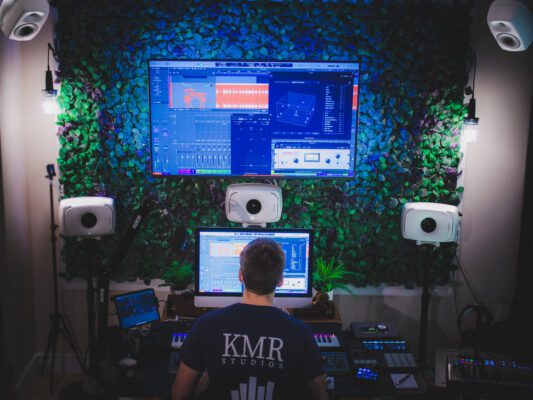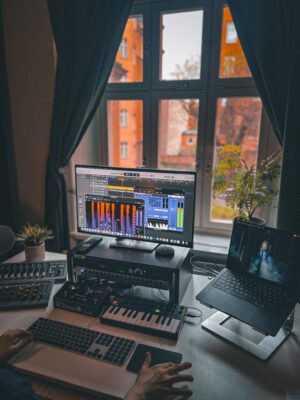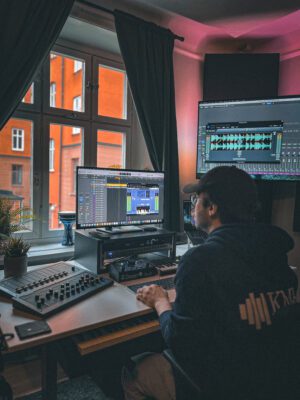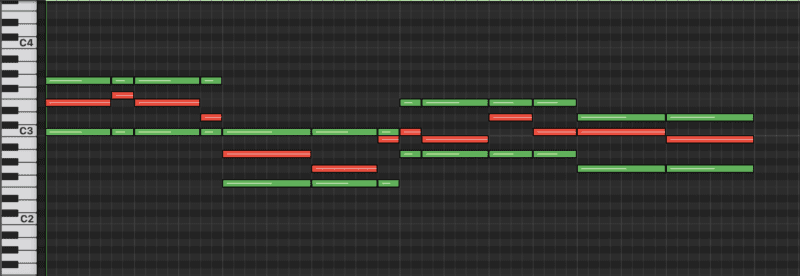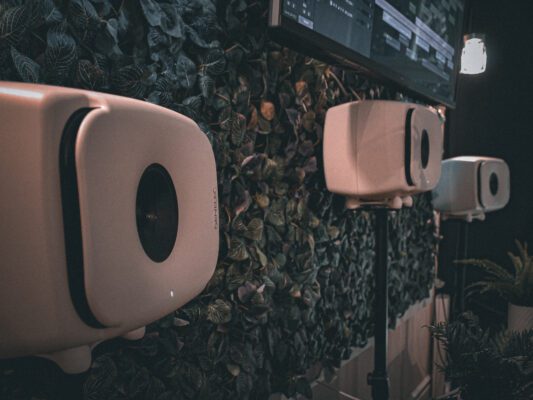In this article, we present 5 important points that you as a producer or artist should consider when submitting your project for mixing. This is to optimize the conditions for the mixing to turn out as you expected. By following these steps and recommendations on how to prepare your project for mixing, you will not only be perceived as professional and friendly, but also increase the chances of the mix meeting your expectations.
Book Mixing1. Export Stems
Whether you work in the same DAW (audio software such as Logic Pro X or Ableton) as your mixing engineer or not, you as a producer are often expected to send the mixer stems from your project. Stems are the tracks that together make up your song. Putting together these stems is important when you prepare your project for mixing. All DAWs work differently, but our advice is to search for “Exporting stems in [your music program]” on YouTube. Then you will surely find a good video showing you how to proceed. If you can’t find it, contact us, and we will be happy to help you.
1.1 Timing
Even if not every track in the song starts playing right at the beginning of the song, you want all stems to start where the song starts. This is so the mixer doesn’t have to guess where you want all the sounds (instruments and vocals) to begin. When you’re done and open your exported stems, all files should start and end at exactly the same time.
1.2 Naming
Each stem (audio file) should have a clear name so that the mixer knows what is what. This allows more time to be spent on mixing instead of organizing. The better you succeed with this, the better conditions your music will have because it minimizes the risk of misunderstandings.
An example of names for audio tracks: vox_lead, drm_kick, egtr_solo, str_legato. The exact names are not the most important thing, but rather that you are consistent.
1.3 Effects
Whether you should send stems with or without effects is entirely up to you as a producer or artist. More effects = less of an opportunity for the mixer to work creatively with your stems. A good rule of thumb is to export without effects like reverb and echo. Of course, if you consider them to be an essential part of the sound, you should include them.
Exporting with pitch correction on vocals and, for example, compressors and EQs is common and completely OK. However, this is often done in the mixing phase as well. The important thing is to be clear when you communicate with the mixing engineer. This helps avoiding misunderstandings that can unnecessarily prolong the process.
1.4 Format
If nothing else is agreed upon, you can use the following specifications regarding the format and resolution of the audio files.
-
- File format: wav.
- Sample rate: 48kHz
- Bit rate: 24 bit
2. Rough Mix, References, and Information
2.1 Rough Mix / Demo Mix
A rough mix along with a brief description of what you like and dislike about this rough mix helps the mixing engineer. This rough mix and descriptions makes it easier for the mixing engineer to understand what direction you want to take the song in. It also gives us insight into what you as a producer/artist have been listening to before handing over the song to us. This, in turn, helps avoiding misunderstandings and increases understanding of your musical ambitions.
2.2 References
It is not required, but it is recommended to include at least one reference song that you want us to draw inspiration from when mixing your song. This could be either an audio file of a finished song or a link to the song on Apple Music / Spotify / YouTube. These can help explain, for example, “this is how I want the bass to feel” or “this is how loud the drums should be.”
2.3 Information
To minimize the risk of misunderstandings and maximize the time the mixing technician spends on your project, we recommend including a PDF or text file. In this file, you can summarize:
-
- Your thoughts/ambitions/expectations for the mix
- BPM
- Key
- Link to reference song
Here, you can also include any other information that you think is important for us to consider. In all music projects at KMR, free video/phone meetings are included, where you have the opportunity to express this as well. The recommendation is to include the documents and take advantage of the planning meeting offered.
3. File Transfer
3.1 Ordering
Being clear about your expectations for the mixer’s work always improves the end result. So, be sure to explain what you expect from mixing when placing your order. Also, be clear about any deadlines or other delivery date requests. That way we can provide you with a preliminary delivery date before you decide whether you want to hire us or not.
3.2 Transfer
When working with KMR Studios, we always provide you with a personal upload link. That way, you can securely upload files to your personal folder in our system. We always archive (save) all material in all our projects for at least 2 years after the project is completed. This is done so that you can be confident that nothing will be lost.
After you complete the steps above, we recommend that you compress the folder with all the files into a .zip file. It is this file that you upload. This makes it easy for us to ensure that we have received all your files. It also minimizes the risk of files being damaged during the transfer.
4. Feedback
4.1 Mastering Included
When you hire KMR Studios for mixing, mastering is always included unless you have opted out when placing your order. So when you receive the first draft of your mix, it is already mastered and ready for release. We do this because we want to give you the opportunity to give feedback on a finished product. This way, you don’t have to imagine how the song might sound later.
4.2 Feedback
When giving feedback on your song, it is best to do it in writing. Try to be as specific as you can, especially when it comes to the timing of sounds in the mix. Instead of saying “the guitar in the end of the first chorus,” say “the guitar at 02:13”.
In Conclusion
If you follow the above steps and recommendations on how to prepare your project for mixing, you can be confident that you have given your music the best prospects. The rest is now up to the mixing and mastering technician.
A few key points about what mixing is not:
- Mixing is not production. As someone ordering mixing, you should not expect new sounds to be created. You are free to express your wishes, but it is up to the technician to assess whether it is reasonable to include them.
- Mixing is not a sounding board. Mixing is not intended to be a step where you get a new perspective on the mix and then continuously send in new files and ideas for production. The production phase is where exploration and experimentation take place. Mixing is about bringing together what has been produced in the best possible way. However, as a producer/artist, you are welcome to send your rough mix to us for free feedback before booking mixing. That way, you can use us as a sounding board. But once the mixing has begun, it is recommended to let the mixing technician handle the mix.
Guides
Guides
What is a clipper?
Guides
Mastering Vocal Harmonies
Dolby Atmos Logic Pro Sound technology
Export master files from Atmos projects in Logic Pro
Contact Us

CONTACT US
OUR PORTFOLIO
Over the past few years, KMR Studios has released hundreds of songs by a wide range of artists. To make it easier for you to find what you’re looking for, we’ve organized the music into various playlists. Click the link below to explore our music by format (stereo or Dolby Atmos) or genre.
Portfolio
 Svenska
Svenska

